21Practice Exam Questions What structure is deep to the arrow in this view from the endoscope during a resection of a pituitary macroadenoma using a transnasal transsphenoidal approach? A. Pituitary gland B. Pituitary stalk C. Internal carotid artery D. Optic nerve E. Sella turcica floor A 42-year-old, otherwise healthy woman presented to clinic with a several-month history of increasing headaches that worsened over the past few days. On physical exam, she had papilledema but otherwise no focal neurologic deficits. Representative scans from an MRI of the brain are shown in these images. What is the most likely diagnosis? A. Central neurocytoma B. Meningioma C. Metastasis D. Choroid plexus papilloma E. Subependymal giant cell astrocytoma What is thought to be the source of the intrinsic T1 hyperintensity normally seen in the posterior pituitary gland on MRI? A. Neurosecretory vesicles–neurophysin complex B. High calcium content within pituicytes C. High concentration of iron D. Manganese A patient with severe, large-amplitude hemiballismus in his right upper extremity most likely has a lesion involving what basal ganglia structure? A. Ipsilateral putamen B. Contralateral putamen C. Ipsilateral subthalamic nucleus D. Contralateral subthalamic nucleus What target for deep brain stimulation is thought to provide the best control of essential tremors? A. Globus pallidus pars externa B. Subthalamic nucleus C. Head of the caudate nucleus D. Ventral intermediate nucleus of the thalamus E. Globus pallidus pars interna The meningeal lesion shown in this image most likely would be demonstrated with a stain directed against what marker? A. CD3 B. CD20 C. Cytokeratin AE1/AE3 D. GFAP E. S-100 protein What structure is indicated by the arrow in this image from an endoscopic third ventriculostomy? A. Septal vein B. Internal cerebral vein C. Caudate vein D. Thalamostriate vein E. Choroid vein The lesion shown in these images demonstrated avid uptake on a 111In-DTPA-pentetreotide scan. What is a characteristic of this lesion? A. The majority of these lesions are multicentric. B. It arises at the Obersteiner-Redlich zone. C. Sporadic lesions are more common in males. D. The majority of these lesions are malignant. E. It may be associated with SDHx gene mutations. What low-grade brain tumor has been shown to be responsive to chemotherapy? A. Meningioma B. Epidermoid C. Choroid plexus papilloma D. Vestibular schwannoma E. Ependymoma A neurosurgical attending physician consults a cardiologist after a patient had an intraoperative myocardial infarction. The anesthesiologist during the procedure was able to draw and send a panel of cardiac enzymes to the lab. This best represents which ACGME Core Competency? A. Medical knowledge B. Professionalism C. Systems-based practice D. Practice-based learning and improvement E. Interpersonal skills and communication A patient presents with a T4 vertebra burst fracture. He has sensation to light touch in the upper and lower extremities in addition to sensation in the S4 and S5 dermatomes. Upper extremity motor function is normal, but the patient has no motor function in the lower extremities. What is the patient’s ASIA classification? A. A B. B C. C D. D E. E What are the steps, in order, in a rapid sequence intubation? A. Induction agent, paralytic agent, intubation B. Bag valve mask preventilation, induction agent, paralysis, intubation C. Paralysis, bag valve mask preventilation, intubation D. Paralysis, induction agent, intubation E. Bag valve mask preventilation, paralysis, intubation Fibers from the flocculonodular lobe of the cerebellum synapse on the vestibular nuclei after first synapsing on what nuclei? A. Dentate nuclei B. Emboliform nuclei C. Globose nuclei D. Fastigial nuclei E. No additional nuclei What limits facilitated diffusion across a neuronal membrane? A. Numerous receptor binding sites for the diffusing molecule B. Lipophilic membranes C. Large concentration gradients D. Amount of ATP available E. Number of transmembrane channels specific for the diffusing molecule The intracranial hemorrhage score is used as a(n): A. Indicator for surgery B. Predictor of morbidity C. Predictor of mortality D. Indicator for the need for intracranial pressure monitoring A 60-year-old woman is being examined by her primary care physician when he notices fine twitching movements beneath the surface of her tongue with “wasting” on one side. What cranial nerve is most likely to be involved in the patient’s condition? A. V B. VII C. IX D. X E. XII A 17-year-old boy presents with increasing thoracic kyphosis. MRI shows multilevel Schmorl nodes and more than 5 degrees of anterior wedging in more than three adjacent vertebrae. What is the patient’s diagnosis? A. Scheuermann disease B. Osteopoikilosis C. Baastrup disease D. Alkaptonuria E. Osteopetrosis What organ would respond to systemic cocaine administration but not to systemic atropine administration? A. Heart B. Salivary glands C. Pancreas D. Sweat glands E. Pupils A 20-year-old man with a history of bipolar disease presents with an acute onset of right-sided hemiparesis and expressive aphasia. According to the CT shown in this image, and assuming the most likely diagnosis, what is the risk of re-hemorrhage? A. 4% in the first 24 hours after hemorrhage B. 20% in the first 2 weeks after hemorrhage C. 50% in the first 6 months after hemorrhage D. 4 to 6% per year E. Less than 1% over a lifetime In what spinal disease is sacroiliac joint involvement not seen? A. Diffuse idiopathic skeletal hypertrophy B. Ankylosing spondylitis C. Both diffuse idiopathic skeletal hypertrophy and ankylosing spondylitis D. Rheumatoid arthritis E. Gout What is the definitive host for the most common opportunistic infection in an individual with HIV/AIDS? A. Bird B. Cat C. Mosquito D. Rodent E. Sheep A deep brain stimulator lead was placed medial to the subthalamic nucleus. What side effects could be expected? A. Increased akinesia with reduced rigidity B. Reduced tremor with persisting akinesia C. Tetanic muscular contraction and dysarthria D. Double vision, ocular deviation, and postural imbalance E. Perspiration, mydriasis, and dysesthesias A 32-year-old man underwent an MRI of the brain that demonstrated a nonenhancing intracranial lesion. An MRI sequence based on measuring the random brownian motion of water molecules at the cellular level showed this lesion to be markedly bright; therefore, the lesion likely is a(n): A. Epidermoid B. Lymphoma C. Meningioma D. Craniopharyngioma E. Arachnoid cyst Back pain, low-grade fever, and destruction of the vertebral bodies with disk preservation are most associated with what condition? A. Tuberculosis B. Staphylococcus aureus diskitis C. Fungal infection D. Hemangioma E. Osteoid osteoma A 32-year-old man suffered a severe neurologic injury in a motor vehicle collision. The patient progresses to presumed brain death. During the brain death exam, the patient is intubated, his PaO2 is 89, systolic blood pressure is 105 mm Hg, diastolic blood pressure is 75 mm Hg, and core body temperature is 35.2°C. What prevents completing the brain death examination in this patient? A. Core body temperature < 35.5° C B. PaO2 < 90 C. Systolic blood pressure < 110 mm Hg D. The fact that the patient is intubated E. Diastolic blood pressure < 80 mm Hg A woman presents to the emergency department with dizziness, nystagmus, and a feeling of falling toward the left. An MRI of the brain was performed, and a representative scan is shown in this image. What vessel likely is involved in this patient’s condition? A. Pontomesencephalic artery B. Anterior inferior cerebellar artery C. Superior cerebellar artery D. Posterior inferior cerebellar artery The primary neurotransmitter of Purkinje cells in the cerebellum is: A. Glutamate B. Glycine C. GABA D. Acetylcholine E. Substance P The most common immediate postoperative endocrine abnormality encountered in children following craniopharyngioma resection surgery is: A. Diabetes insipidus B. Diabetes mellitus C. Hypothyroidism D. Growth hormone deficiency E. Acromegaly How do steroids affect bony density? A. Inhibit osteoclast function B. Inhibit bone reabsorption C. Increase urine calcium excretion D. Prevent urine calcium excretion E. Induce gastrointestinal calcium absorption A 25-year-old woman is discovered to have a cluster of paraspinal neurofibromas involving multiple nerves and a family history of similar lesions throughout multiple family members. What other lesion or condition may be found on physical exam? A. Bilateral acoustic neuromas B. Iris hamartomas C. An increased risk of meningiomas D. Pigmented spots encircling the iris E. Multiple schwannomas How would nerve action potential as measured by peripheral nerve conduction testing be affected by a herniated disk with nerve root compression? A. Unaffected B. Slowed conduction velocity C. Decreased amplitude D. Increased velocity A 20-year-old man presenting with hearing loss and vertigo underwent an MRI examination, shown in this image. What is an additional expected associated feature of the entity shown? A. Ependymomas B. Sphenoid wing dysplasia C. Calcified subependymal nodules D. Leptomeningeal angiomatosis E. Endolymphatic sac tumors What antibiotic can be used to treat a patient with chronic syndrome of inappropriate antidiuretic hormone secretion (SIADH)? A. Vancomycin B. Cefazolin C. Doxycycline D. Demeclocycline E. Erythromycin This histological image represents what disease process? A. Alzheimer disease B. Parkinson disease C. Lafora disease D. Creutzfeldt-Jakob disease E. Rabies A sharply circumscribed, lucent lesion with beveled edges is demonstrated on a skull radiograph of a child. What is the likely diagnosis? A. Langerhans cell histiocytosis B. Hemangioma C. Intraosseous meningioma D. Metastasis What types of fibers are targeted for destruction during a percutaneous trigeminal rhizotomy for trigeminal neuralgia? A. A-alpha and beta fibers B. A-alpha and A-delta fibers C. A-delta and C fibers D. A-delta and beta fibers E. C and beta fibers The afferents from the mammillothalamic tract project from the mammillary bodies to what thalamic nuclei? A. Centromedian nuclei B. Anterior nuclei C. Ventral lateral nuclei D. Lateral posterior nuclei E. Medial dorsal nuclei A woman presents to a neurologist with complaints of being unable to walk down a flight of stairs due to an ability to “see the stairs clearly.” The neurologist notes that the patient is tilting her head to the left when in primary gaze. What type of ophthalmoplegia does the patient have? A. Left trochlear nerve palsy B. Left oculomotor nerve palsy C. Right trochlear nerve palsy D. Right oculomotor nerve palsy E. Internuclear ophthalmoplegia A basion–axial interval greater than 12 mm on a lateral cervical spine radiograph is indicative of what process? A. Anterior atlanto-occipital dislocation B. Atlantoaxial instability C. Longitudinal dislocation D. A normal finding E. Transverse ligament injury A patient with amyotrophic lateral sclerosis may present with what symptoms? A. Tongue fasciculations, atrophy of the hands, and lower extremity hyporeflexia B. Forehead-sparing facial weakness, spasticity of the hands, and lower extremity hyperreflexia C. Progressive weakness (proximal more than distal), areflexia, and bilateral facial weakness D. Weakness (upper more than lower extremity), decreased sensation with dysesthesias, and urinary retention E. Tongue fasciculations, atrophy of the hands, and lower extremity hyperreflexia What is the incidence of symptomatic hydrocephalus in patients with a Dandy-Walker malformation? A. 20% B. 50% C. 70% D. 90% E. 100% What is the standard radiation regimen for stereotactic radiosurgery for trigeminal neuralgia? A. 20 Gy in four doses directed at the center of the lesion B. 20 Gy in four doses directed to extend beyond the periphery of the lesion C. 80 Gy in a single dose directed at the center of the lesion D. 80 Gy in a single dose directed to extend beyond the periphery of the lesion E. 100 Gy in a single dose directed at the center of the lesion A 65-year-old divorced man is brought to the hospital following a severe head injury. The patient’s ex-wife had legal power of attorney prior to the divorce and states that the patient would not want to be intubated or receive any further medical care. In most states, what is the best course of action? A. Follow the ex-wife’s orders, and do not provide any further medical care. B. Consult the hospital’s ethics committee. C. Obtain a court order to proceed with necessary treatments. D. Attempt to contact the patient’s children to discuss plans of care. E. Proceed with the necessary treatments regardless of the ex-wife’s wishes. An axial noncontrast CT of the head is shown in this image. What does the arrow point to? A. Petroclival fissure B. Pars nervosa of jugular foramen C. Carotid canal D. Foramen rotundum E. Foramen ovale A 28-year-old man weighing 60 kg remains intubated following a craniotomy. His serum sodium is 153 mEq/L. What is his approximate free water deficit? A. 0.8 L B. 3.2 L C. 4.0 L D. 6.2 L The vertebral CT findings shown in this image are compatible with what process? A. Ochronosis B. Paget disease C. Blastic metastases D. Osteopetrosis A non–terminally ill patient has medically intractable pain in the lower extremities bilaterally due to cancer. What is the best procedure to perform for pain relief in this patient? A. Bilateral cervical cordotomies B. Punctate midline myelotomy C. Commissural myelotomy D. Spinal cord stimulation E. Dorsal root entry zone (DREZ) lesioning How do the characteristics of optic nerve gliomas in children differ from those in adults? A. Optic nerve gliomas have more of an association with neurofibromatosis type 1 in adults. B. Optic nerve gliomas tend to be low grade in children and high grade in adults. C. Rosenthal fibers are absent in presentations of optic nerve gliomas in children. D. There is a stronger association with optic nerve gliomas and neurofibromatosis type 2 in adults than in children. A 3-year-old boy is diagnosed with a posterior fossa tumor and undergoes tumor resection. This image depicts the pathology of the lesion. What associated syndrome might he also have? A. Von Hippel–Lindau disease B. Gorlin syndrome C. Tuberous sclerosis D. Lynch syndrome What muscle typically is innervated by the radial nerve itself and not by one of its terminal branches? A. Extensor carpi radialis longus B. Extensor carpi radialis brevis C. Extensor carpi ulnaris D. Supinator E. Abductor pollicis longus At what day of human embryogenesis does the primitive streak first appear? A. Day 8 B. Day 12 C. Day 15 D. Day 20 E. Day 26 A 45-year-old man patient with history of hypertension and diabetes presents with progressive myelopathy. A contrast enhanced MRI study was performed, shown in these images. What is the likely diagnosis? A. Acute spinal cord ischemia B. Arteriovenous fistula C. Infiltrating neoplasm D. Demyelinating process E. Infectious myelitis What is the effect of antiepileptic drugs (AEDs) on seizures following a traumatic brain injury? A. AEDs decrease the rate of acute and delayedonset seizures. B. AEDs decrease the rate of acute but not of delayed-onset seizures. C. AEDs decrease the rate of delayed-onset but not of acute seizures. D. AEDs do not decrease the rate of acute or delayed-onset seizures. E. AEDs have an indeterminate effect on posttraumatic seizures. A 78-year-old woman presents to the emergency room complaining of weakness and long-standing headaches. She reports that the weakness began in the right upper extremity and then proceeded to involve the right lower extremity followed by the left lower extremity and, most recently, the left upper extremity. Based on these clinical findings, what is the most likely pathological cause of the patient’s symptoms? A. Interhemispheric mass B. Brainstem infarct C. Cervical spine epidural hematoma D. Foramen magnum tumor E. Third ventricle tumor What triangle of the skull base is delineated by the greater superficial petrosal nerve and the mandibular division of the trigeminal nerve? A. Oculomotor B. Parkinson (infratrochlear) C. Glasscock D. Kawase E. Inferolateral With relation to intracranial hypertension, to what does the Cushing triad refer? A. Hypertension, tachycardia, and respiratory irregularity B. Hypotension, tachycardia, and respiratory irregularity C. Hypertension, bradycardia, and respiratory irregularity D. Hypotension, tachycardia, and respiratory irregularity The most important predictor of outcome in children with pediatric ependymomas is: A. Gross total resection B. Radiosurgery C. Dose of conformal radiation D. Chemotherapy E. Steroids A 5-month-old boy underwent an MRI of the brain, shown in these images. What may be a related finding? A. Abdominal mass B. Opisthotonos C. Fever D. Cutaneous bruising A Parkinson patient is having a deep brain stimulating electrode placed in the globus pallidus, and the lead is passed too far inferiorly. What symptom(s) may arise when the system is activated? A. Perspiration and mydriasis B. Muscle contractions C. Dysarthria D. Visual flashes If additional sodium channels were opened on a neuron at its maximal point of depolarization during an action potential, what would happen to sodium ion flux and membrane potential? A. Sodium flux and membrane potential would not change as they are maximized at this point in the action potential. B. Sodium ions would enter the neuron, and membrane potential would become more positive. C. Sodium ions would leave the neuron, and membrane potential would become more positive. D. Sodium ions would enter the neuron, and membrane potential would become less positive. E. Sodium ions would leave the neuron, and membrane potential would become less positive. A 60-year-old man presents with a fairly sudden onset of severe vertigo and left-side hearing loss. What is the most likely diagnosis? A. Labyrinthitis B. Vestibular neuronitis C. Benign positional vertigo D. Meniere disease E. Stroke This image shows cerebral vessels stained with Congo red. What is the underlying disease process represented in the image? A. Moyamoya disease B. Cavernous hemangioma C. Cerebral angiopathy D. Mucormycosis E. Radiation necrosis The sural nerve is formed from the combination of two nerves arising from what larger branches? A. Deep and superficial peroneal nerves B. Tibial and common peroneal nerves C. Tibial and femoral nerves D. Common peroneal and femoral nerves E. Superficial peroneal and tibial nerves MRI scans of the brain of a newborn are shown in these images. What is the patient’s likely diagnosis? A. Arachnoid cyst B. Blake pouch cyst C. Dandy-Walker malformation D. Mega cisterna magna A patient presents with exophthalmos and an orbital bruit. What is the likely finding on CT of the brain and orbits? A. Orbital mass B. Engorgement of the extraocular muscles C. Enlarged ophthalmic artery D. Unruptured cavernous sinus aneurysm E. Flattening of the posterior aspect of the globe The cerebral venous angle occurs at what junction? A. Internal cerebral vein and basal vein of Rosenthal B. Septal and thalamostriate veins C. Vein of Galen and inferior sagittal sinus D. Caudate and thalamostriate veins E. Torcular Use the following answers for questions 67 and 68: A. Respiratory alkalosis B. Metabolic acidosis C. Combined respiratory and metabolic alkalosis D. Partially compensated respiratory acidosis What pathology is represented by the following arterial blood gas values? pH: 7.15 PCO2: 79 mm Hg HCO3−: 29 mEq/L What pathology is represented by the following arterial blood gas values? pH: 7.70 PCO2: 29 mm Hg HCO3−: 40 mEq/L A 14-year-old boy presents to his pediatrician with short stature, delayed puberty, and anosmia. He otherwise is developmentally normal without focal neurologic deficits. What is a characteristic of his likely condition? A. The disease is more common in women. B. The disease typically is inherited in an autosomal dominant fashion. C. This disease typically is inherited in an X-linked fashion. D. MRI of the brain is expected to show no abnormalities. Crouzon syndrome is mostly associated with premature closure of what skull suture(s) during infancy? A. Bicoronal sutures B. Sagittal suture C. Lambdoid suture D. Metopic suture E. Unilateral coronal suture What characteristic is most likely to be associated with intracranial aneurysms? A. Whole brain radiation exposure B. Type 2 Ehlers-Danlos syndrome C. Illicit drug use D. Bacterial endocarditis E. Male gender A 24-year-old man presents with progressive back pain. Imaging demonstrates an osteolytic lesion in the posterior elements of the middle thoracic spine with a fluid–fluid level. What is the most likely pathology? A. Spinal metastatic lesion B. Aneurysmal bone cyst C. Osteoid osteoma D. Osteoblastoma E. Eosinophilic granuloma The reticulin rich mass shown in this image presented in the right frontal lobe of a 4-year-old boy. The tumor stains with glial fibrillary acidic protein and contains focal areas of synaptophysin positive staining neuronal cells. What is the most likely diagnosis for this tumor? A. Desmoplastic infantile astrocytoma B. Desmoplastic infantile ganglioglioma C. Extraventricular neurocytoma D. Gangliocytoma E. Pleomorphic xanthoastrocytoma A 56-year-old man comes to clinic at the behest of his wife because of an increasing number of falls at home. During the interview, the physician notices that the patient has a masklike expression. The patient’s wife also states that he has been choking during meals and holding reading materials straight in front of his face. Vertical gaze paresis, axial rigidity, and dysarthria are noted on exam. What is the most likely diagnosis? A. Parkinson disease B. Corticobasal degeneration C. Progressive supranuclear palsy D. Multiple system atrophy A 49-year-old woman presents to the emergency room with the “worst headache of my life” and a third nerve palsy with ptosis and a dilated pupil. She is noted to have subarachnoid hemorrhage on a head CT. What is her Hunt and Hess grade? A. 1 B. 2 C. 3 D. 4 E. 5 End of Section 1. Take a 10-minute break. Assuming that this image is the only finding on a noncontrast cervical spine CT, this patient may have what pathology? A. Intra-abdominal injuries B. Spinal cord transection C. Anterior circulation infarcts D. Cerebellar infarcts What is the risk of stroke per year in patients with atrial fibrillation and a CHADS2 score of 2, and what is the relative risk reduction for stroke in prescribing warfarin for patients with a CHADS2 score of 2 or greater? A. 1 to 3%; 74% reduction B. 3 to 5%; 64% reduction C. 5 to 6%; 54% reduction D. 6 to 8%; 44% reduction E. 8 to 10%; 84% reduction Mutations in the MCPHi or cyclin-dependent kinase 5 regulatory associated protein 2 are associated with what clinical condition? A. Autosomal dominant macrocephaly B. Autosomal dominant microcephaly C. Autosomal recessive macrocephaly D. Autosomal recessive microcephaly E. X-linked microcephaly The tumor shown in these images was found to have rosettes and perivascular pseudorosettes on microscopic examination, and stained positive for glial fibrillary acidic protein. What is a characteristic of the lesion? A. It commonly arises from the roof of the fourth ventricle. B. It is associated with neurofibromatosis type 1. C. It may be complicated by polycythemia. D. Calcification and hemorrhage are common. Cheyne-Stokes respirations are characterized by increasing followed by decreasing tidal volumes separated by periods of apnea. They are seen in heart failure, with rapid blood sugar changes, and in stroke. Where do Cheyne-Stokes respirations originate? A. Carotid bodies, pons, and cerebral hemispheres B. Diencephalon, medulla, and dorsal pons C. Basal ganglia, pons, and cerebral hemispheres D. Diencephalon, pons, and carotid bodies E. Diencephalon, basal ganglia, and cerebral hemispheres A patient is doing well and recovering after a lumbar diskectomy. She requests pain medications and has a first-time seizure shortly after administration of a pain medication known to cause histamine release. Tachycardia is noted. What part of her medical care may account for the postoperative developments? A. Cerebral hypotension due to a cerebrospinal fluid leak B. Vasovagal response to pain C. Administration of meperidine D. Acute recurrent disc E. Chemical meningitis related to surgery What is a characteristic of the lesion found in the MRI scan shown in this image? A. It is derived from embryonic mesoderm. B. It most commonly presents with cranial neuropathies. C. It is associated with elevated levels of alanine on MR spectroscopy. D. It may present with acute brain herniation and death. E. Calcification and regions of nodular enhancement are common. What triangle of the skull base is formed by the interclinoidal dural fold, posterior petroclival ligament, and anterior petroclival ligament? A. Oculomotor B. Parkinson (infratrochlear) C. Glasscock D. Kawase E. Inferolateral The most common suprasellar contrast-enhancing solid and cystic mass during childhood as seen on the MRI shown in this image is: A. Suprasellar astrocytoma B. Suprasellar teratoma C. Craniopharyngioma D. Suprasellar ependymoma E. Optic pathway glioma A 14-year-old girl with a long-standing history of epilepsy presents to clinic with progressive headaches. Medical history is otherwise unremarkable. An MRI examination of the brain was performed. Shown in these images, from left to right, are axial FLAIR, T1-weighted, and contrast-enhanced T1-weighted scans of the brain. This lesion likely represents: A. Lymphoma B. Pleomorphic xanthoastrocytoma C. Meningioma D. Dysembryoplastic neuroepithelial tumor E. Pilocytic astrocytoma When explaining the risks and benefits of undergoing surgery to a patient, a vascular neurosurgeon cites the ARUBA trial, which is a multicenter, international, randomized clinical trial. What level of evidence is the physician providing? A. Level 1 B. Level 2 C. Level 3 D. Level 4 E. Level 5 What is the diagnosis of a patient with the Goldman visual field testing result shown in this image? A. Malingering/inability to participate in the exam B. Severe glaucoma C. Optic nerve atrophy D. Chiasmatic lesion E. Afferent papillary defect What T-score defines osteoporosis? A. +1 to 2.5 B. −1 to +1 C. −1 to −2.5 D. Less than −2.5 E. T-score definition is age dependent A patient with bluish pigmentation of the auricles and sclerae presents for evaluation. Levels of homogentisic acid in his urine are elevated. What finding is likely to be seen on a CT of the patient’s spine? A. Wedging of adjacent vertebrae B. Multifocal Schmorl nodes C. Extensive intervertebral disk calcification D. H-shaped vertebrae What is the best deep brain stimulation target for Parkinson disease–related gait and postural instability, falls, and freezing? A. Subthalamic nucleus B. Ventralis intermedius nucleus of the thalamus C. Pedunculopontine nucleus D. Globus pallidus internus The histological appearance of the hippocampus shown in this image suggests: A. Tumor B. Mesial temporal lobe sclerosis C. Hypoxia/anoxia D. Trauma/cerebral contusion A 58-year-old man presents with delusions and hallucinations. His wife reports that he has been complaining recently of headaches, irritability, and sleep disturbance, and that he has had a progressive memory decline over the past month. Brain MRI shows high T2 signal without enhancement, mostly in the left mesial temporal lobe. Chest radiograph shows a centrally located pulmonary mass. Cerebrospinal fluid examination shows elevated lymphocytes, elevated protein, normal glucose, elevated IgG index, and oligoclonal bands. Herpes virus PCR is negative. What is the most likely diagnosis? A. Herpes simplex encephalitis B. Limbic encephalitis C. Pontine stroke D. Paraneoplastic cerebellar degeneration E. Multiple sclerosis A preterm infant undergoes a cranial ultrasound. Coronal and sagittal images are presented here. What is the likely diagnosis? A. Acute infarction B. Germinal matrix hemorrhage C. Hypoxic-ischemic injury D. Periventricular leukomalacia Which structure runs through the cavernous sinus but does not pass through the superior orbital fissure? A. Optic nerve B. Oculomotor nerve C. Ophthalmic division of the trigeminal nerve D. Maxillary division of the trigeminal nerve E. Abducens nerve What type of receptor is found on sweat glands along postganglionic sympathetic fibers? A. Muscarinic B. Adrenergic C. AMPA D. NMDA E. Nicotinic Sagittal balance is measure from what two positions? A. C1 to L5 B. Opisthion to L5 C. T1 to sacrum D. C7 to sacrum E. C7 to L5 A patient has unilateral twitching of her left eye when looking downward and nasally. She denies pain and discomfort but describes her vision in that eye as “shaky.” The rest of her ophthalmological workup is unremarkable. What is the likely diagnosis? A. Hemifacial spasm B. Duane syndrome C. Myasthenia gravis D. Superior oblique myokymia What letter in this image represents the portion of the primary motor cortex most devoted to control of the hand intrinsic muscles? A. A B. B C. C D. D E. E An established patient with multiple sclerosis presents to clinic. He has a known lesion in his medial longitudinal fasciculus affecting his right eye. What is found on examination of his extraocular movements? A. Conjugate gaze to the right, plegia of right eye adduction, and left eye nystagmus with left gaze B. Conjugate gaze to the left, plegia of right eye abduction, and left eye nystagmus with left gaze C. Conjugate gaze with left and right gaze and nystagmus of the right eye when looking to the left D. Normal extraocular movements A 33-year-old, otherwise healthy man underwent an MRI, shown in these images. Histological analysis of his lesion revealed a large amount of mucin with formation of rosettes and pseudorosettes. “Collagen balls” were evident on periodic acid-Schiff staining. This lesion is consistent with a: A. Schwannoma B. Metastasis C. Myxopapillary ependymoma D. Neurofibroma E. Paraganglioma A 53-year-old woman is status post–resection of a 2.5-cm vestibular schwannoma. Preoperatively, her House-Brackmann facial function was grade 1. Postoperatively, the patient had obvious weakness with facial asymmetry. There was no movement of her forehead with incomplete eye closure and asymmetry of her mouth with maximum effort. What is her House-Brackmann grade? A. Grade 2 B. Grade 3 C. Grade 4 D. Grade 5 E. Grade 6 The lesion shown in this image most commonly is associated with what underlying disease? A. Multiple endocrine neoplasia (MEN) type 1 B. MEN type 2a C. Neurofibromatosis type 1 D. Neurofibromatosis type 2 E. Tuberous sclerosis What parameter change in a neuron favors a signal temporal summation rather than a spatial summation? A. A smaller membrane resistance B. A larger internal resistance C. A lower membrane capacitance D. A larger intracellular space What is the best route for vitamin K administration in the setting of life-threatening hemorrhage in a patient on warfarin? A. Oral B. Intravenous bolus C. Subcutaneous D. Intravenous slow continuous infusion E. Intra-arterial As a screening tool for a disease, a physician orders a diagnostic test with a sensitivity of 80% and specificity of 90%. The result returns as positive for the disease, which happens to have a 25% prevalence in the general population. What is the chance that the patient actually has the disease? A. 100% B. 90% C. 89% D. 73% E. 57% What is a characteristic of the tumor shown in this image? A. Calcifications are infrequent. B. Necrosis warrants a WHO grade IV designation. C. Pericellular clearing is an artifact of delayed formalin fixation. D. It represents a WHO grade I tumor. E. It is generally circumscribed and amenable to gross total resection. A 68-year-old man with a history of diabetes, hypertension, and multiple prior transient ischemic attacks presents to the emergency department with left-sided hemiplegia and a facial droop. Conventional angiography is performed after MRI of the brain. A digital subtraction image of the patient’s right carotid artery bifurcation is shown in this image. What is the angiographic finding? A. Internal carotid artery dissection B. Complete occlusion of the internal carotid artery C. Fibromuscular dysplasia D. Formation of a pseudoaneurysm with flow artifact E. Critical carotid artery stenosis with intraluminal thrombus A 32-year-old man presents to the hospital with seizures. Imaging reveals a 4-cm arteriovenous malformation (AVM) in the right frontal basal ganglia. The venous drainage is to the internal cerebral veins. What is the Spetzler-Martin grade of this AVM? A. 1 B. 2 C. 3 D. 4 E. 5 What nerve(s) provide(s) parasympathetic innervation to the kidneys? A. Vagus nerve B. Lumbar splanchnic nerves C. Thoracic splanchnic nerves D. Inferior mesenteric plexus nerves E. Superior mesenteric plexus nerves A 9-month-old, nonvaccinated girl is brought to the emergency room for generalized seizures. She has a stiff neck, is poorly responsive, and has a temperature of 39.1°C. Her parents report that she had one episode of diarrhea earlier in the day. Cerebrospinal fluid Gram stain is negative. What pathogen most likely is the origin of these symptoms? A. Cryptococcus B. Haemophilus influenzae C. Neisseria meningitidis D. Streptococcus pneumoniae E. Herpes simplex virus Representative scans of a brain MRI examination in a child are shown in these images. What likely is related directly to the neuroimaging findings? A. Nonaccidental trauma B. Congenital aqueductal stenosis C. Sepsis D. Medulloblastoma What is the most important factor to determine the stability and need for surgical fixation of a Jefferson fracture? A. Disruption of the transverse ligament B. Disruption of the alar ligament C. Posterior arch fracture D. Lateral mass fractures E. Disruption of tectorial membrane What triangle of the skull base is formed by the lateral border of cranial nerve IV, medial border of the ophthalmic division of the trigeminal nerve, and dura between the dural entry points of both cranial nerves IV and the ophthalmic division of V? A. Oculomotor B. Parkinson (infratrochlear) C. Glasscock D. Kawase E. Inferolateral A 9-year-old boy presents to the emergency department with progressive throat and neck pain after tonsillectomy. The emergency room physician consults neurosurgery for evaluation for Grisel syndrome. What radiographic finding supports this diagnosis? A. Power ratio greater than 1 B. Overhang of the C1 lateral masses on C2 is at least 7 mm C. Rotatory subluxation with inflammation of the C1/C2 facet capsule D. “Kissing” spinous processes E. Significant anterior cervical “flowing” osteophytes Two axial noncontrast CT scans of the head are shown in these images. What is the patient’s likely clinical presentation? A. Rapid-onset dementia B. Acute left-sided hemiplegia C. Fever and nuchal rigidity D. Progressive encephalopathy What is the most common location of choroid plexus papillomas in children? A. Lateral ventricles B. Third ventricle C. Fourth ventricle D. Foramen of Monro E. Cerebral aqueduct Use the following answers for questions 42 to 45: A. Hyperkalemia B. Hypokalemia C. Hypercalcemia D. Hypomagnesemia E. Hypophosphatemia What is the likely electrolyte abnormality in a patient presenting with ileus, weakness, U waves, and a prolonged QT interval? What is the likely electrolyte abnormality in a patient presenting with polyuria, dehydration, mental status changes, abdominal pain, anorexia, nausea, vomiting, and fatigue? What is the likely electrolyte abnormality in a patient presenting with weakness, muscle cramps, tremors, nystagmus, and tetany? What is the likely electrolyte abnormality in a patient presenting with weakness, nausea, peaked T waves, and an increased PR interval? Axial and sagittal postcontrast T1 scans of the brain of a child are shown in these images. What is the likely diagnosis? A. Choroid plexus papilloma B. Meningioma C. Ependymoma D. Subependymoma E. Central neurocytoma What feature of a burst fracture may imply instability and the need for surgery? A. Loss of height of 25% B. Angulation of 5 degrees C. Residual canal diameter 80% of normal D. Pain that improves with bracing E. Injury to the posterior ligamentous complex A patient presents with a nystagmus described as the eyes moving up and down discordantly with intorsion of the rising eye and extorsion of the falling eye. What visual field abnormality might be seen on exam? A. Loss of peripheral vision (tunnel vision) B. Bitemporal hemianopsia C. Central scotoma D. Binasal hemianopsia E. Unilateral inferior hemianopsia On MRI, a cerebral hematoma is noted to be hyperintense on T1 and hypointense on T2-weighted sequences. These signal characteristics are related to what blood component? A. Oxyhemoglobin B. Deoxyhemoglobin C. Intracellular methemoglobin D. Extracellular methemoglobin E. Hemosiderin How does hypertension affect the risk of developing a hemorrhagic stroke? A. Hypertension does not increase the risk. B. Hypertension increases the relative risk by 3.9 to 5.4%. C. Acute hypertension secondary to sympathomimetics or preeclampsia is not thought to elevate the risk. D. Hypertension increases the risk of developing a supratentorial but not an infratentorial intracranial hemorrhage. Compared to primary glioblastomas, secondary glioblastomas tend to express what histopathological characteristics? A. EGFR gene amplification B. PTEN gene mutations C. TP53 gene mutations D. Allelic gain of chromosomes 10q and 19q E. Increased GFAP staining You perform surgery on a patient with a far lateral herniated disk at L4/L5. You use a lateral approach, and the pars interarticularis is identified. The L4 nerve root can be found anterior to what structure? A. L4 pedicle B. L5 pedicle C. Intertransverse ligament D. Disk space E. Multifidus muscle What muscle is innervated by the superior laryngeal nerve? A. Transverse arytenoid B. Posterior cricoarytenoid C. Stylopharyngeus D. Cricothyroid E. Geniohyoid What hydrolyzes cAMP? A. Adenyl cyclase B. Phosphodiesterase C. Protein kinase A D. CREB E. Phospholipase C The “empty delta” sign on a contrast-enhanced head CT implies what pathology? A. Arterial thrombosis B. Dural sinus thrombosis C. Expansion of a parenchymal hematoma D. Impending herniation What aspect of newer “atypical” antipsychotics is thought to be responsible for the lower rate of extrapyramidal side effects when compared with older “typical” antipsychotics? A. More antihistaminergic and anticholinergic activity B. Less antihistaminergic and anticholinergic activity C. More antidopaminergic activity D. Less antidopaminergic activity E. Serotonin receptor agonism According to the Gardener and Robertson modified hearing classification, serviceable hearing has at least what percentage of speech discrimination? A. 15% B. 30% C. 50% D. 70% E. 90% The cerebellum projects to what thalamic nucleus (nuclei)? A. Anterior nuclei group B. Ventral lateral nucleus C. Ventral posterior lateral nucleus D. Ventral posterior medial nucleus E. Medial geniculate body What type of nystagmus can be associated with Parinaud syndrome? A. Downbeat nystagmus B. Seesaw nystagmus C. Nystagmus retractorius D. Abducting nystagmus A 70-year-old man presents to the emergency room with neck pain after a fall. The patient is reported to be neurologically intact. CT scan shows imaging consistent with ankylosing spondylitis. Imaging suggests a Chance fracture through the C5/C6 disk space extending through the posterior elements. Upon the neurosurgeon’s arrival, the patient is found to be quadriparetic. What is the most likely cause of the patient’s sudden quadriparesis? A. Poor initial neurologic exam by the emergency room physician B. Epidural hematoma alone C. Unstable fracture exacerbated by external stabilization alone D. Unstable fracture exacerbated by external stabilization with potential epidural hematoma E. Over medication/sedation A 65-year-old man undergoes an MRI of the brain. The enhancing lesion shown in these images demonstrates diffuse low apparent diffusion coefficient values. What is the patient’s likely diagnosis?
Section 1: 60 Minutes, 75 Questions
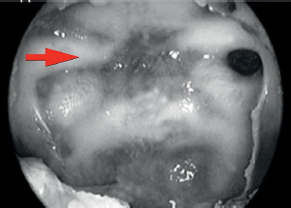
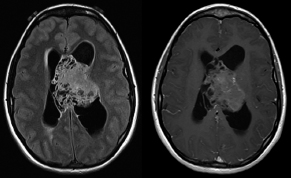

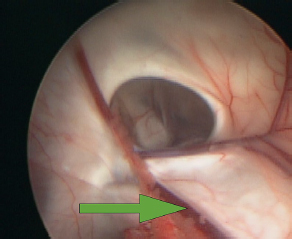
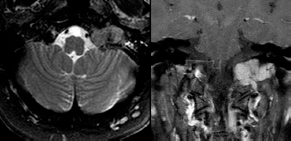
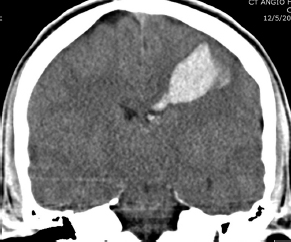
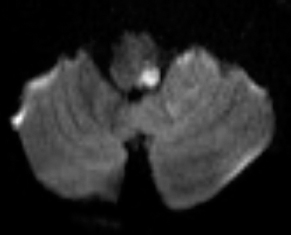
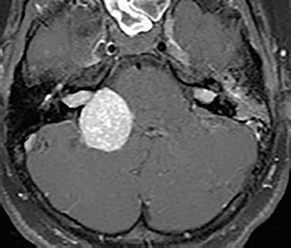
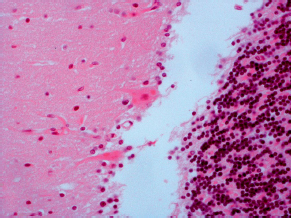
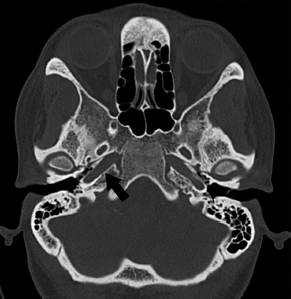
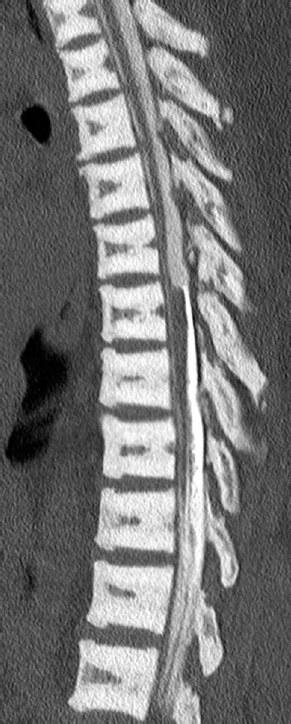
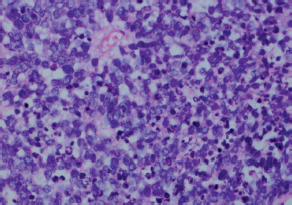
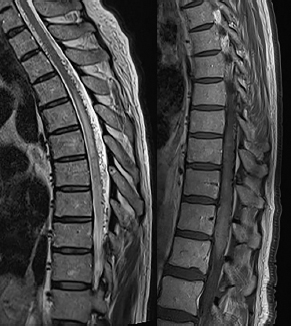

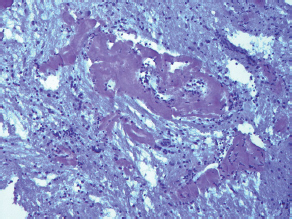
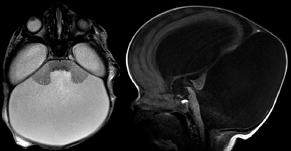
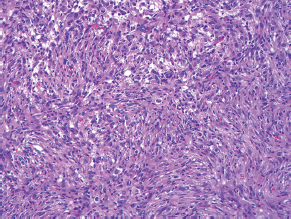
Section 2: 60 Minutes, 75 Questions
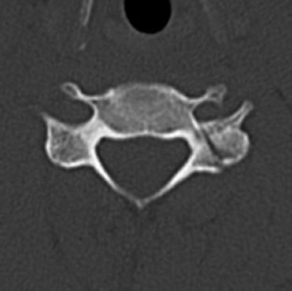
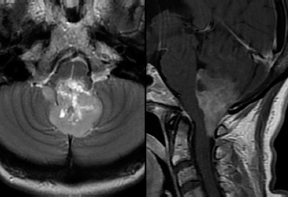
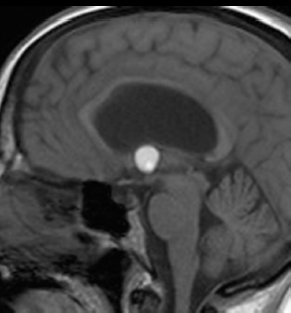
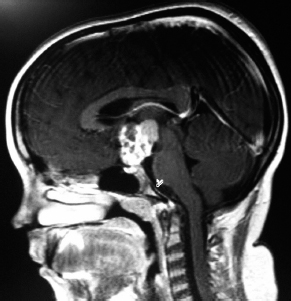
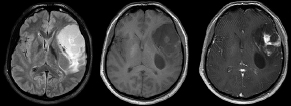
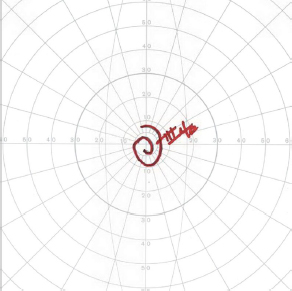
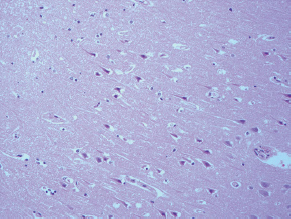
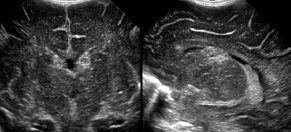
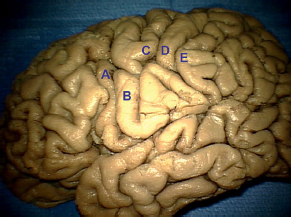
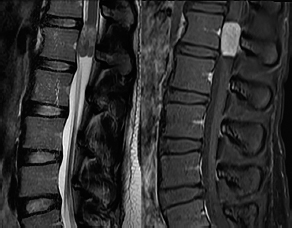
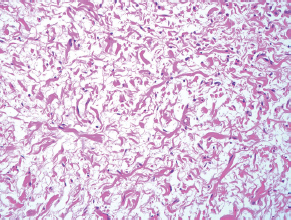
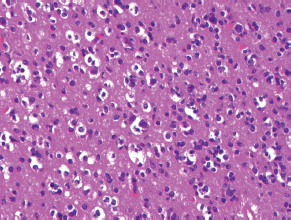
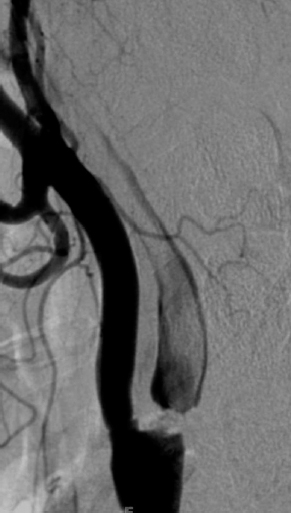
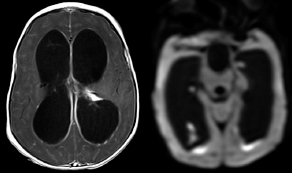
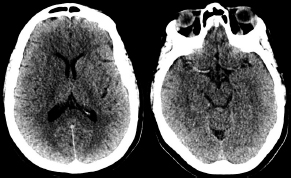
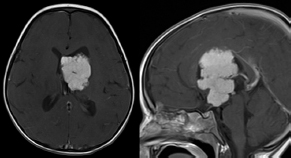
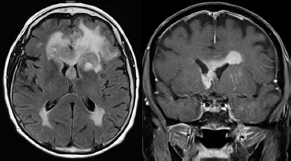
![]()
Stay updated, free articles. Join our Telegram channel

Full access? Get Clinical Tree








